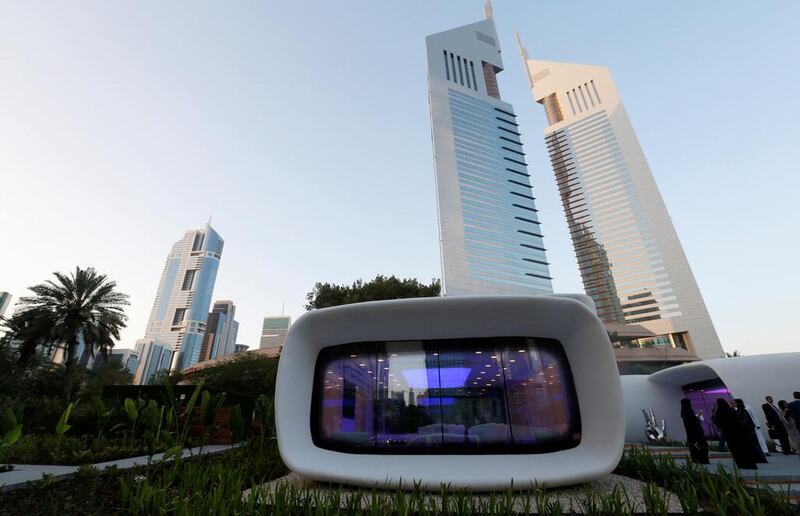The future is now – at least if you are attending the 2016 Annual Meeting of the Global Future Councils in the UAE this week. The world’s leading experts have flown in to Dubai to answer some of the region’s most pressing challenges and consider a world where humanity, biology and machines are increasingly intertwined. One key question we are hoping to answer: what is the future of the Arab world during the Fourth Industrial Revolution?
Never before have such questions been so relevant. The Arab world is being fundamentally shaped by geopolitical, economic and social trends that are upending what we once knew as the status quo. Considering these trends within the context of the Fourth Industrial Revolution, we are faced with crucial questions about where we are and where we want to be.
To name a few: what will production look like in the Middle East and North Africa (Mena) region when our manufacturing and production systems are changing almost overnight? Can smart cities help to address the significant infrastructure gap in the region? And how does Mena shift from its dependency on oil to a more sustainable, secure and affordable energy system?
The 2016 Annual Meeting of the Global Future Councils, co-hosted by the World Economic Forum (WEF) and the UAE, includes 35 councils ranging from The Future of Blockchain to The Future of Human Rights and The Future of Advanced Materials. These councils will serve as launching pads for the answers to the most challenging questions.
Indeed, this is not the first time the UAE has taken bold steps towards embracing the future. The World Economic Forum’s 2015-16 Global Competitiveness Report identified the UAE as the 25th most innovative country in the world. The country is aiming to have 25 per cent of its building 3D printed by 2030. Blockchain will become the foundation of its government services. It is even targeting 25 per cent of its power generation to be from clean energy by 2030.
In fact, these trends are also visible in the rest of the region. Jordan’s Edraak is an online education start-up geared towards native Arab speakers that is approaching 1 million users. Refugee camps in Lebanon’s Bekaa Valley are embracing the Internet of Things, with sensors that monitor temperature conditions. Saudi scientists are exploring self-cleaning solar panels, which could be the transformation point for solar energy. Jordan’s refugee camps use UNHCR’s next-generation Biometric Identity Management System to link 300,000 refugees’ irises and fingerprints to their documentation, history and bank account. Egypt recently built its first solar-powered village, with solar panels integrated into the design of homes.
Certainly these changes are happening quickly, and yet as Professor Klaus Schwab, the founder and executive chairman of the WEF wrote in his recent piece Leading the Middle East Into the Future, the region’s values should be a central feature of all new technologies. Conferences like the 2016 Annual Meeting of the Global Future Council will help to establish a shared vision for the region that incorporates the unique cultural values of the Arab world.
The UAE has been a true partner to the WEF, and we look towards the coming days with great anticipation and expectation. Together, we can help to build a more sustainable, more inclusive, and more successful Arab world.
Miroslav Dusek is the head of the Middle East & North Africa at the World Economic Forum
Follow The National's Business section on Twitter





